Agriculture leaders in the United States House of Representatives are looking to provide at least an additional $10 billion in farmer aid to supplement the recently announced Farmer Bridge Assistance…
Federal Reserve: Observations on the Ag Economy- October ’17
On Wednesday, the Federal Reserve Board released its October 2017 Beige Book update, a summary of commentary on current economic conditions by Federal Reserve District. The report included several observations pertaining to the U.S. agricultural economy.
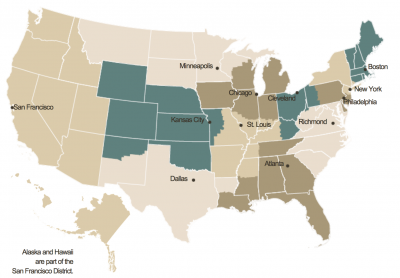
* Sixth District- Atlanta– “Agriculture conditions across the District were mixed.
Although damage assessments are still being made, Irma’s heavy rains and high winds resulted in significant damage to Florida’s agriculture industry as well as crop damage in parts of Georgia and Alabama.
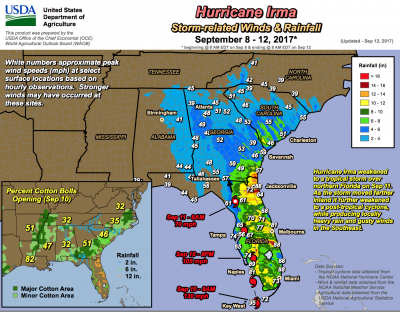
“Tennessee’s corn harvest closely tracked the five-year average. The District’s cotton harvest and the soybean harvests in Mississippi and Tennessee were mostly on par with five year averages. Both the Louisiana and Mississippi rice harvests were ahead of their five-year averages. On a year-over-year basis, prices paid to farmers in August were up for corn, broilers, and eggs but were down for cotton, rice, soybeans, and beef.”
* Seventh District- Chicago– “Contacts expected both the corn and soybean harvests to be close to trend but smaller than last year’s record.”
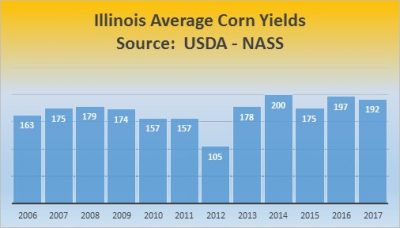
“On balance, crop conditions worsened in late August and September as drought conditions spread in the District. In addition, suboptimal weather conditions earlier in the year meant crops were less mature than normal and that the harvest started later than usual. Corn prices moved down (but were still higher than a year ago), while soybean prices were little changed (and slightly lower than a year ago).
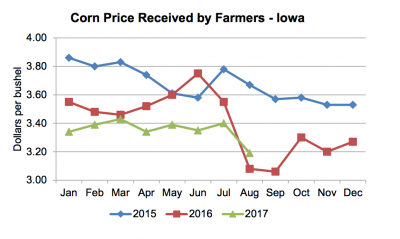
“With the exception of eggs, livestock and dairy prices were down as supplies stayed plentiful. New hog processing plants in Iowa and Michigan were ramping up more slowly than planned because labor was in short supply.
Prospects for agriculture incomes declined overall during the reporting period
* Eighth District- St. Louis– “District agriculture conditions improved modestly from the previous reporting period. Reports from farmers indicated that they have been impressed by their harvest numbers so far. Production and yield forecasts improved from August to September for corn, cotton, and soybeans. For rice expected yields ticked up from August to September, while expected production ticked down after downward revisions to rice acreage estimates. Relative to 2016, District cotton and soybean production levels were projected to be higher, while those for corn and rice were projected to be lower.”
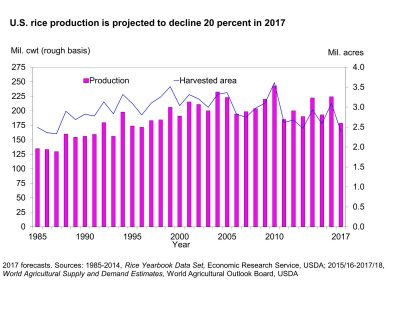
* Ninth District- Minneapolis– “District agricultural conditions improved slightly since the previous report, but remained weak overall. Though drought conditions eased, large areas of Montana and the Dakotas remained exceptionally dry, and much of the damage to crops had already been done.”

“Early indications were that the wheat harvest might be better than expected in these areas, but still well below average. Areas not affected by drought were generally expecting good yields, but saw harvests delayed by rains.”
* Tenth District- Kansas City– “The District farm economy continued to soften, but showed some signs of stabilization since the previous reporting period.
Farm income in the District was lower than a year ago, but some agricultural commodity prices rebounded slightly.
“Soybean prices increased modestly from the previous reporting period, and yield expectations remained strong. Wheat prices remained flat, but were higher than a year ago. Corn prices declined slightly amid strong production expectations, but District contacts expected strong crop yields to offset some weakness in prices. Cattle and hog prices declined slightly from the previous reporting period, but also remained higher than a year ago. Farmland values declined modestly in some regions, but generally remained steady in areas with strong crop production.”
* Eleventh District- Dallas– “Crop conditions remained favorable, although Hurricane Harvey hampered agriculture in the Coastal Plains. The extent of the impact is not yet known, but some livestock were lost and a small portion of the Texas cotton crop was damaged. Some rice and soybeans were also affected, but likely minimally.”
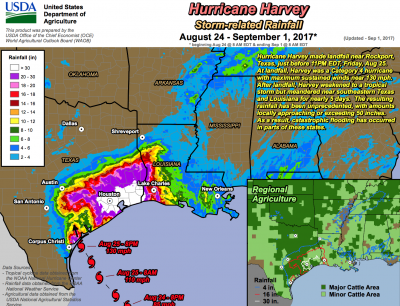
“Overall, grain production was strong, with particularly robust yields in Northeast Texas. There is good moisture for planting winter wheat, but while wheat prices are higher than a year ago they are still generally below breakeven levels.”
Agricultural producers remain concerned about low crop prices, NAFTA negotiations, and the configuration of the next farm bill.
* Twelfth District- San Francisco– “Activity in the agriculture sector was flat. Harvest yields of grains and potatoes were down slightly due to a wet spring, but overall quality was up. Demand for pork products dipped slightly, and profitability in the industry remained challenging. Reduced input prices boosted profitability in the feedlot industry. Contacts noted that foreign demand for some agricultural goods remained solid, and they did not expect exchange rate movements to slow exports.”





